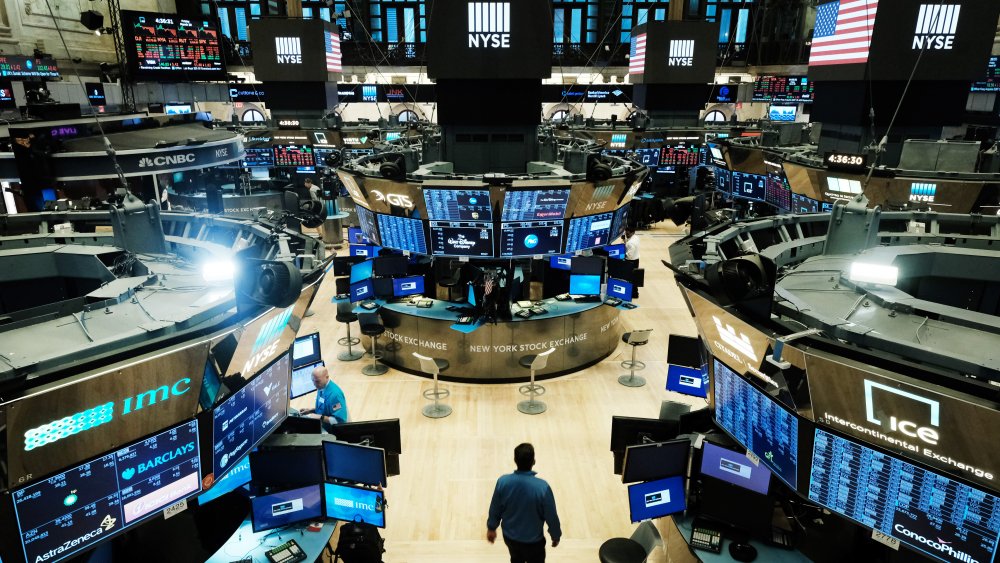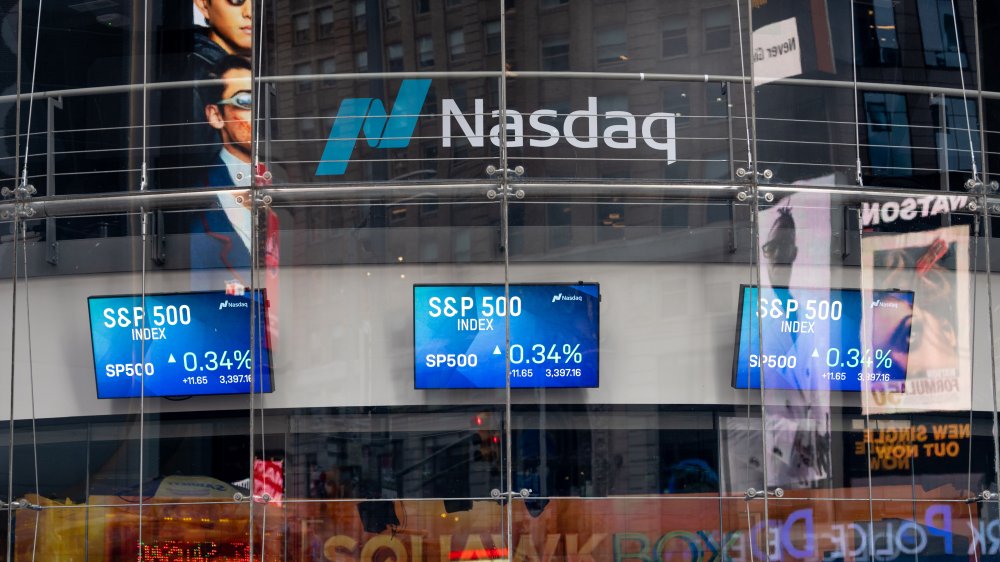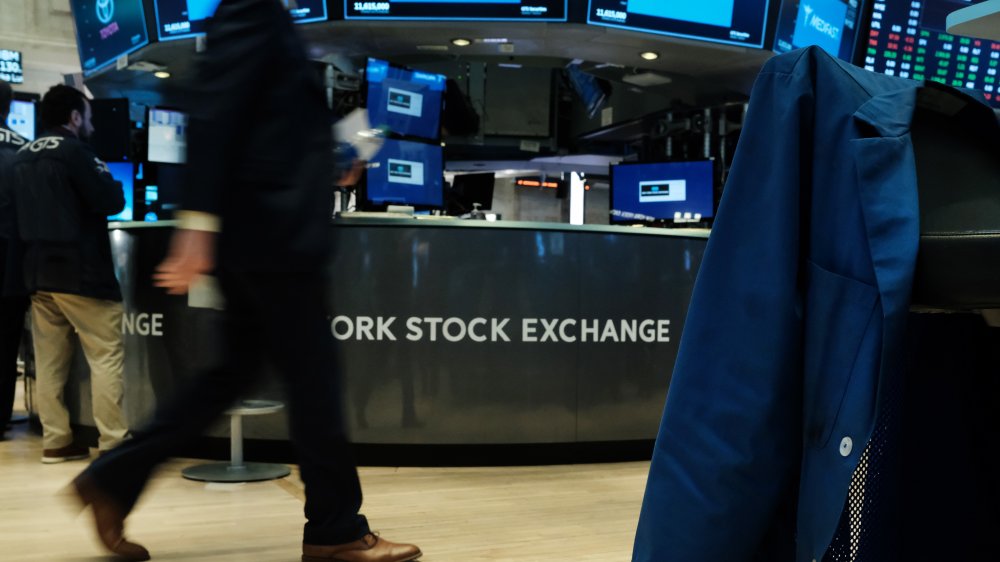What It's Like To Work On The Floor Of The Stock Market
When you open the news and find out the stock market crashed, you often see photos of despondent stockbrokers on the floor of the stock exchange. The trading floor is one of the most iconic areas of finance, and not everyone understands what it's like to work there.
Trading floors are where all the stock trading magic happened. The floor is typically an open area with desks and phones and people littered all around. There's a big electronic board that flashes all listed companies and their stock prices. A stock market floor is no place to read a company's financial statement quietly, it works as a large noisy auction house. If a trader wants to buy a stock, they would yell out their order, and their counterpart who's selling the stock will signal that they've come to an understanding. This is a process called open outcry, explained Investopedia, where decisions are made based on what traders talk about on the floor.
Open outcry first developed when traders began dealing with more complicated transactions, probably around the 17th century. The first stock markets started in Europe and bought and sold actual commodities, compared to today's commodity contracts (and to explain commodity contracts is a whole different story altogether). But as European economies began to grow, people started thinking of other ways to make money. That's when traditional stock markets and the trading floor fully began.
A relic of the past
Investopedia pointed out the first trading floors used to be subdued affairs where traders would just walk up to someone's desk and make a deal. But as companies got richer, the floor became a marketplace.
According to Zacks, traders negotiate prices on the trading floor before the stocks can be transferred. In the past, stocks were printed on paper, so the physical stock had to be moved physically. Any information on companies also comes out in paper, through a ticker tape, a thin piece of paper similar to tape that feeds off a machine that includes the company's symbol and price for the day. That's why to do this day, companies listed on a stock exchange still have a ticker symbol.
But the trading floor is actually a relic of the past. As trading becomes more electronic, very few stock exchanges in the world have one. The New York Stock Exchange (NYSE) in Wall Street is one of the few to still operate a physical trading floor, Quartz explained and continues to do so because they think it's important to have humans closer to trading. Electronic trading may be faster (you get to act on information in a split second), exchanges like the NYSE believe a trading floor is still advantageous to certain buyers and is safer than computer trading. After all, the 2010 Flash Crash did start with computers.
Multitasking is a must
These days, the trading floor is a far quieter place to work. You still need to have a booming voice and an affinity for hand signals, though. Most people who work on the trading floor, and most traders in finance, don't buy and sell for themselves, reported Business Insider. They're employed by an agency, usually, a bank or something called a broker-dealer, and represent the agency or a client of the agency when negotiating deals.
All NYSE floor brokers and traders wear a telltale blue jacket. And they have to get to the exchange pretty early. Trading at the NYSE begins at 9:30 in the morning, and to get ahead of the day (and the computers that are on pretty much 24/7), brokers get in around 7:30 am, said Business Insider. They go ahead and read up on current events, affecting how people want to spend their money, and start communicating with clients. Around 9 am, right before the trading day starts, brokers begin to get orders from their clients on which stocks they want to buy or sell. There's usually a lull right before lunch, and then everything picks up again before the market closes at 4 pm.
The Bright Network wrote working as a trader means you have to understand why markets move different ways. You also have to learn how to handle 40 communication lines and several emails all at once.
While the trading floor immortalized in movies and sad newspaper photos no longer exists as we know it, some people still find the thrill of being down there and yelling out numbers exciting, ala Matthew McConaughey's Wolf of Wall Street character.


